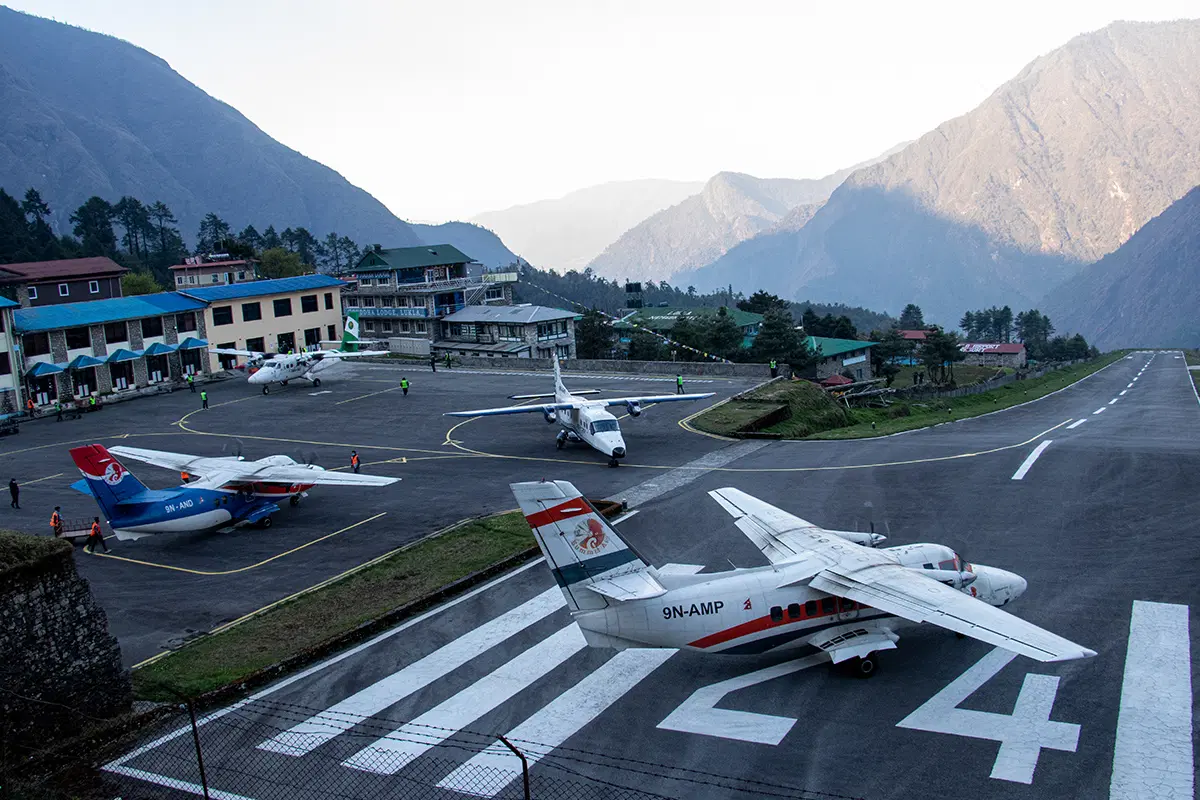
Eight most dangerous airports in the world
From dizzying altitudes in the Himalayas to icy slopes in the Alps and windswept beaches in Scotland, some of the world’s most dangerous airports test the very limits of aviation.
These are not your average runways: they are feats of daring design carved into extreme terrains, often surrounded by mountains, oceans, or unpredictable winds. For passengers, landing at these airports is less of a routine descent and more of a white-knuckle thrill ride. For pilots, only the most elite are certified to even attempt them.
Here are eight of the most dangerous airports in the world: and why they’re not for the faint of heart.
- Lukla Airport, Nepal (Tenzing-Hillary Airport)
Perched at 9,300 feet and cradled by razor-edged Himalayan peaks, Lukla is the gateway to Mount Everest: and arguably the most dangerous airport on Earth. The runway is just 1,729 feet long and ends in a sheer cliff. Flights are strictly limited to clear daylight hours, and turbulence is often so extreme that passengers describe the experience as “terrifying.”
- Paro Airport, Bhutan
Tucked deep within the Himalayas, Paro requires planes to weave through narrow mountain valleys without the help of radar. It’s Bhutan’s only international airport, and just 17 pilots globally are approved to land there. The approach is so risky that flights can only operate during specific daylight hours, with extra caution during windy seasons.
- Courchevel Altiport, France
Serving the upscale ski resort of Courchevel in the French Alps, this airport boasts an upward-sloping runway with no lights or instrument landing systems. Only small planes and helicopters are permitted. Ice, snow, and nearby ski runs add to the danger. Crashes are not uncommon as one in August 2021 left a passenger dead.
- Madeira Airport, Portugal
Built partly on stilts over the Atlantic Ocean, Madeira’s airport is known for its violent crosswinds and dramatic surroundings. Special pilot training is mandatory. The site has seen four fatal accidents, the most recent in 2003, which claimed 10 lives shortly after takeoff.
- Toncontin International Airport, Honduras
Once named the second most dangerous airport in the world, Toncontin is surrounded by mountainous terrain that forces pilots to execute a sharp 45-degree turn right before landing. A 2011 crash that killed 14 people underscores the danger. Veteran aviators say: “You don’t land at Toncontin, you survive it.”
- Princess Juliana International Airport, St. Maarten
Known for its jaw-dropping beach landings, planes approach this Caribbean airport just feet above sunbathers on Maho Beach. Though structurally less risky, the low-altitude approach poses dangers for both planes and people below, especially during stormy weather.
- Barra Airport, Scotland
The only airport in the world where scheduled flights land on a tidal beach, Barra offers a stunning but tricky experience. Pilots must time arrivals with the tides, and the “runway” of wet sand can quickly become unstable. Wind, rain, and fog frequently complicate landings.
- Narsarsuaq Airport, Greenland
Remote and surrounded by glacial fjords, Narsarsuaq is plagued by extreme weather and strong winds. Located in southern Greenland, it often suffers from limited visibility and ice-covered runways. Only highly trained pilots attempt landings, often relying on sheer experience to navigate the treacherous descent.
